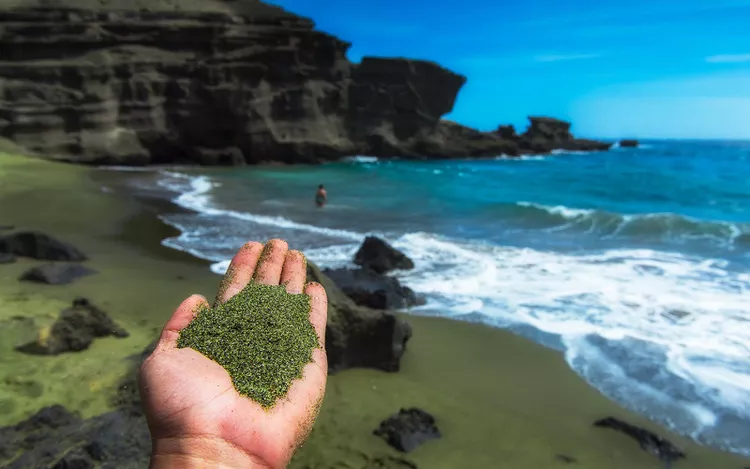Exploring the World’s Unique Green-Sand Beaches
Seeing green at the beach is usually reserved for swaying palm trees or seaweed that washes ashore. However, there are exactly four beaches in the entire world that feature remarkable green-sand shores. These unique destinations offer stunning experiences for travelers seeking something out of the ordinary.
Found in varied locations such as Norway and Guam, the grains of naturally green sand contain crystalline particles known as olivine—a heavy green silicate that remains resilient against being washed away by waves. Consequently, this leads to lakefront and oceanfront beaches displaying a verdant hue, creating an extraordinary atmosphere.
The Best Secret Beaches on Earth
Papakolea Beach in Hawaii
Not too far from South Point (the southernmost point in the United States) on Hawaii’s Big Island lies Papakolea Beach. This green-sand beach is located at the mouth of a bay on a tuff ring, the site of a volcanic eruption that occurred approximately 49,000 years ago. To reach Papakolea Beach, travelers must embark on a vigorous downhill hike, where they will discover grains of sand that are almost pure olivine, showcasing various shades of green. Notably, the olivine is a remnant of ancient lava flows from Pu’u Mahana.
Talofofo Beach in Guam
Similarly, olivine contributes to the striking features found at Talofofo Beach on the Pacific island of Guam. Visitors have observed that the beach’s green sands tend to emerge prominently during optimal sun and weather conditions, often accumulating in deposits on darker, muddier patches. Moreover, Talofofo Beach is renowned as one of Guam’s premier surfing spots, surrounded by picturesque limestone cliffs that enhance its natural beauty.
Punta Cormorant in Ecuador
The Galápagos Islands are among the most isolated and unique destinations in the world. Formed by volcanic activity, these islands host numerous endemic species found nowhere else on Earth. On the island of Floreana, Punta Cormorant boasts a beach that is strikingly green. Over the years, olivine crystals from nearby volcanic sites have drifted to the beach, making it a popular spot for both tourists and marine life such as stingrays and sea turtles.
Hornindalsvatnet in Norway
Lastly, Europe’s greenest sand can be found at Lake Hornindalsvatnet in Norway. This unassuming location is unique for a beach, especially in the chilly northern regions. The shores of this fjord lake are among the select sites on Earth where naturally green sands are present. Formed through glacial movements thousands of years ago, the lake is filled with green mineral deposits that set it apart from other beaches. However, it’s important to note that Hornindalsvatnet, the deepest lake in Europe, remains too cold for swimming or sunbathing.




